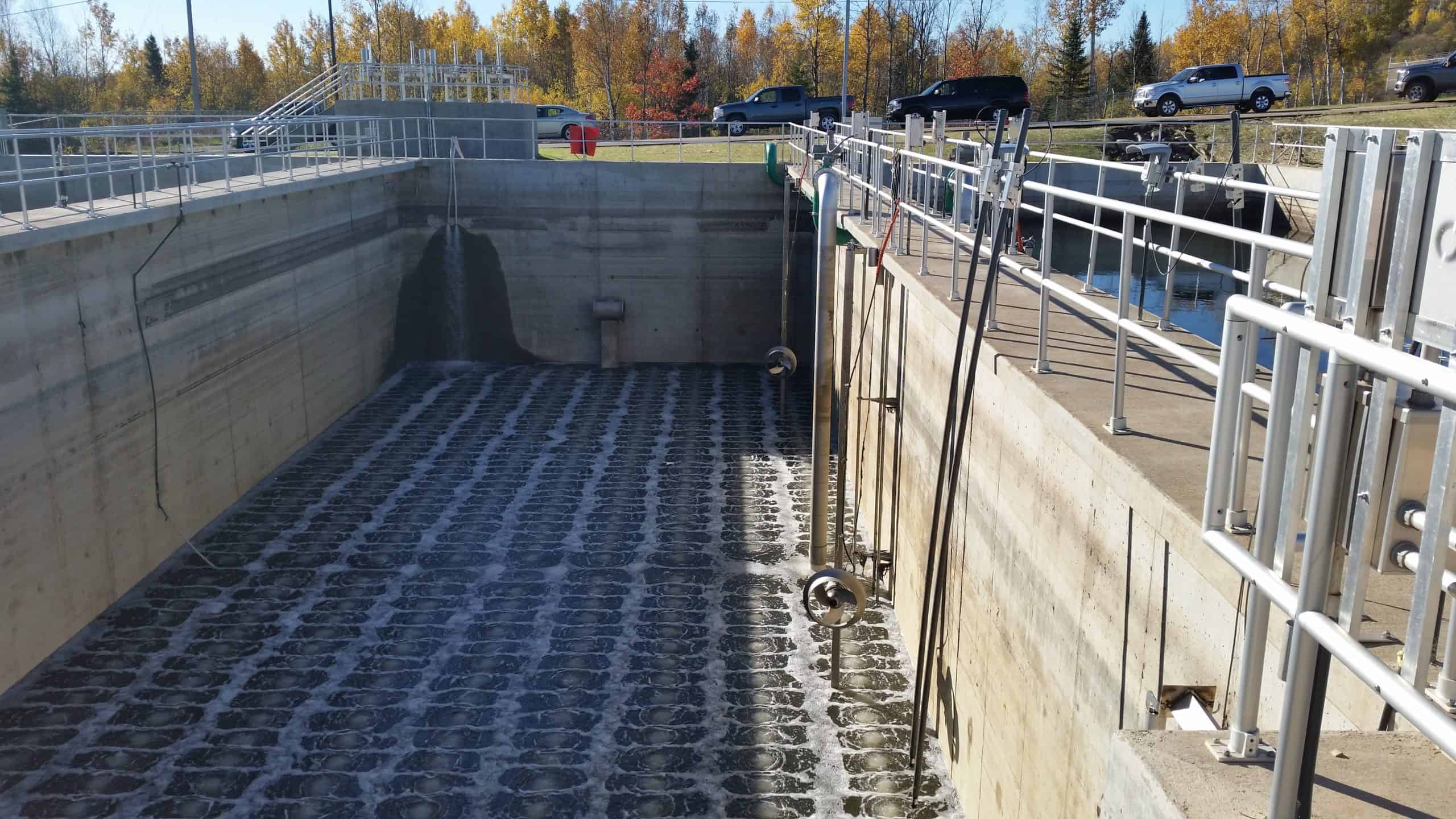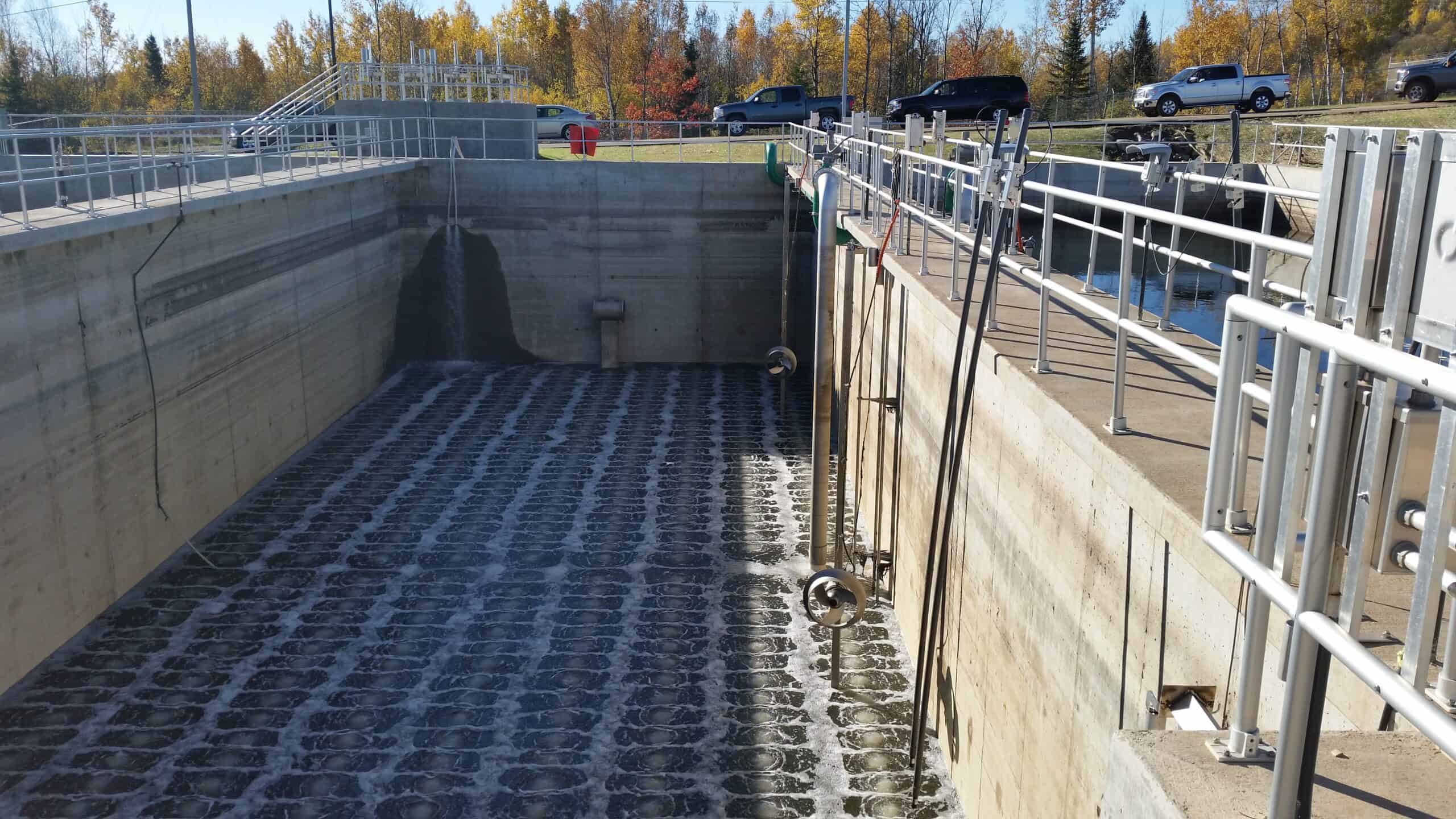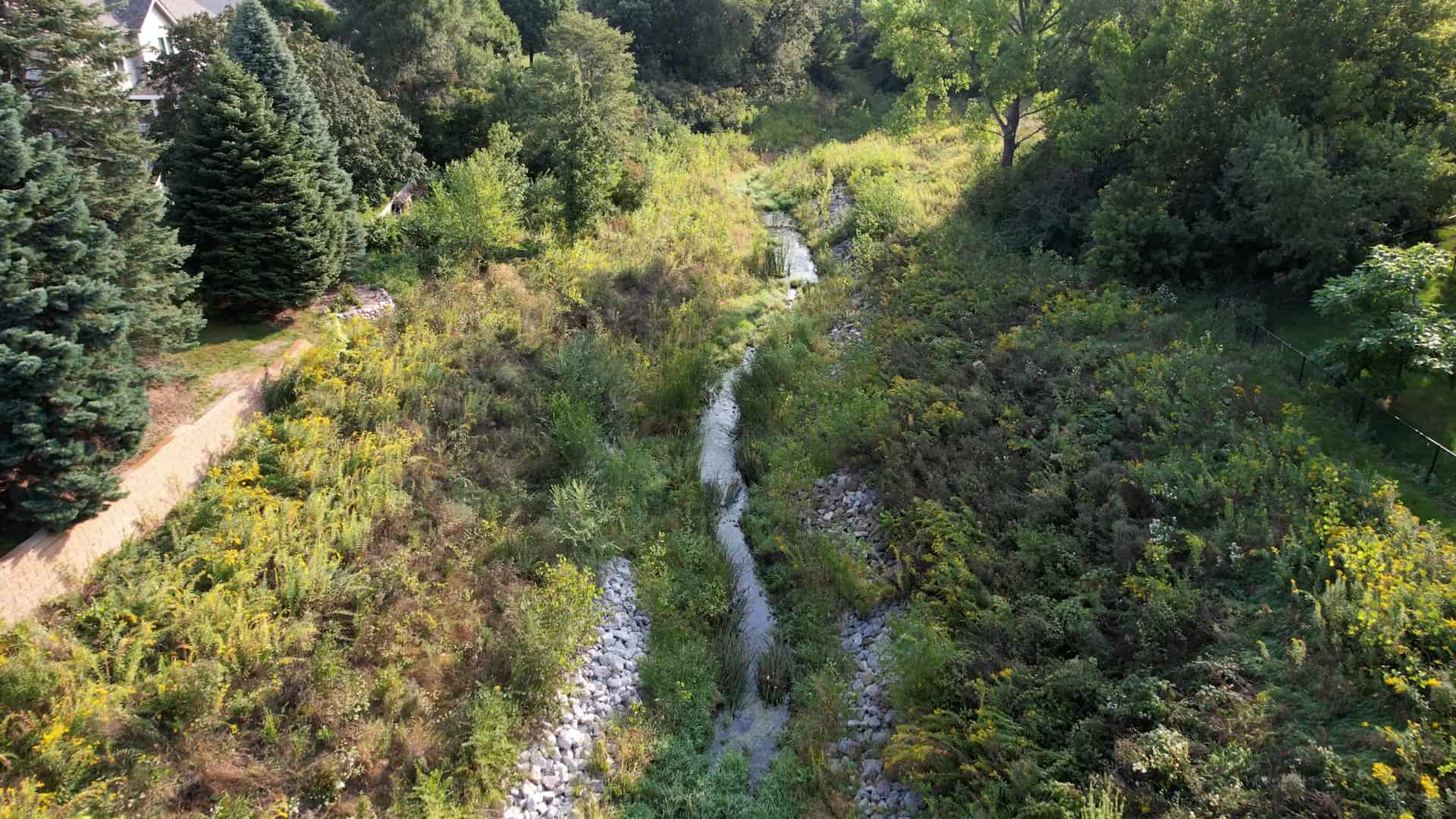
Seeking More Sustainable Wastewater Treatment

Though human health and the environment have benefitted from the emergence of wastewater treatment as a standard protocol for waste disposal, the benefits have come with a high economic burden to the budgets of municipalities and industries. Three percent of the electricity used in the United States is used to treat wastewater (Burton 1996).
Typically most of the energy required is used to provide oxygen to the biological processes that break down the waste. Energy is also required to pump water from tank to tank and to filters and other processes. The following are examples of several energy savings measures that could be applied to your wastewater treatment plant, helping to reduce the amount of electricity the WWTP needs to operate, and addressing the neglected pillar of the triple bottom line – your operating budget.
Aeration System Improvements
Providing oxygen for biological treatment of wastewater generally consumes 25 to 60 percent of the total wastewater plant energy use (WEF, 2009). Wastewater flows and pollutant concentrations usually vary daily and seasonally; therefore the level of oxygen required for treatment can vary significantly over time. Similar to the way that pumping systems may need to match their output to the arrival of wastewater flow to the plant, efficient aeration systems need to deliver the amount of dissolved oxygen (DO) needed for biological breakdown of the waste without providing excess oxygen to the process.

Wastewater treatment plants commonly employ blowers to deliver oxygen to the wastewater process. In order to prevent wasting electricity on over aeration, blowers can be controlled by DO probes located in the wastewater treatment basins. Implementing this type of control can be a big energy saver because less oxygen will be delivered to the wastewater during low oxygen demand periods. There are numerous configurations for monitoring DO to provide blower control and some are more effective than others.
In addition to DO-based blower control, blowers are often installed with conservative settings to avoid a dangerous condition called surge. Surging of blowers can be very damaging and should be avoided. There are blower control strategies that minimize the wasted air (blow-off) that is eliminated from the system in order to prevent surge conditions. Minimizing the air wasted due to blow-off and precisely turning down the blowers instead results in a direct savings of electricity.
Another method to save on energy costs is to implement most open valve (MOV) control strategy. A MOV strategy results in control valves operating in a more open position. By keeping the valves more open there is correspondingly less pressure loss through the pipeline which reduces wasted energy. This results in a lower pressure required by the blowers and therefore lower horsepower to achieve the same flow. For further information please refer to our recent white paper titled Energy Savings.
Advanced Aerobic Process – Modified Ludzack-Ettinger
The Modified Ludzack-Ettinger (MLE) process requires significantly less oxygen than standard aeration systems. The reduction in oxygen required is achieved by delivering nitrate, a compound that can serve a similar role as oxygen, to the bacteria for use during wastewater treatment. The MLE process has two other secondary benefits: it requires less alkalinity addition than standard aeration and it also removes nitrogen from the wastewater.
Traditional aeration systems simply change the form of nitrogen without removing it. Nutrient limits, which are permitting limits on total nitrogen and total phosphorous, will be in effect in 29 states by 2016 (www.epa.gov). If your plant is planning to contend with total nitrogen limits in the future, switching to an MLE process is a good way to meet the limits due to the process’s efficient use of air. Different MLE configurations require different rates of energy consumption for pumping recycle flows, therefore proper planning during design is needed to minimize that energy expense.
Anaerobic Systems
Since we have been discussing how expensive and complicated delivering air to biological processes can be, why not go anaerobic? Anaerobic systems rely on a different suite of bacteria to break down waste that does not require oxygen and therefore does not require aeration. Anaerobic systems are especially good at treating high-strength wastewaters. Industries such as food processing plants, sweetener processing plants, and slaughterhouses are good candidates for anaerobic treatment.
[pullquote]Switching from aerobic treatment to anaerobic treatment is where the greatest energy savings can be achieved since all of the energy required to aerate is eliminated.[/pullquote]In the municipal setting anaerobic digesters are frequently used to digest waste-activated sludge. Switching from aerobic treatment to anaerobic treatment is where the greatest energy savings can be achieved since all of the energy required to aerate is eliminated. Another benefit of anaerobic digestion is that the energy that it recovers from the wastewater can often be used to generate heat and even electricity at the plant. Please refer to our whitepaper on Anaerobic Digestion to learn more.
Motors
Approximately 90% of the electrical energy consumption of a wastewater treatment plant goes to powering electric motors (WEF, 2009). These motors pump water, blow air, pump chemicals, open and close valves, and more. Since motors are present in so many processes within a wastewater treatment plant, paying attention to the efficiency of those motors can pay dividends. The energy savings associated with switching older motors with premium efficiency motors can be on the order of 4 to 8 percent (NEMA, 2007).
Even if the payback for replacing motors is not significant enough to justify changing them out immediately, seeking out the highest efficiency motors when making new equipment purchases can help to realize a payback upon replacement. All new general-purpose motors are now required to be premium efficiency and therefore likely to be more efficient than older motors, however, special attention must be paid to new submersible motors since they are exempt from the requirement to have premium efficiency motors.
Pumping Systems
Wastewater treatment plants are often required to pump water at rates that match the rate of arrival of new wastewater in order to minimize storage requirements. Under this scenario, flow control must be applied to pumping systems. The opportunity here is that some methods of flow control are more efficient than others. For example, throttling valves are commonly used for flow control, however, they perform the control via the creation of energy losses in the pipeline.
Variable frequency drives (VFDs) match the rotation of the shaft of the pump with the rotation required to deliver the desired water flow and in doing so, often provide flow control with less energy loss. Using VFDs does produce some heat loss and also requires that the pumps (and VFDs) perform efficiently across the expected range of operation. Therefore, in order to confirm that their application will provide sufficient payback, an analysis should be performed. In addition, if pumps are not operating in their preferred operating range during use they could be wasting significant energy. Consider having an analysis of your system done to determine if improvements need to be made and which solution would work best for the plant.
Conclusion
Though significant energy is required for wastewater treatment, that energy can be reduced with the application of these suggested improvements. The best way to make sure that your plant takes advantage of opportunities for energy savings is to plan for them by creating a sustainability plan or comprehensive energy management program.
Creating a long-term plan is important. Making changes to major infrastructure can have high capital costs and it may be best to delay a project until the useful life of the equipment has been exceeded. With a living document to guide decision-making, your plant will be on its way to significant energy savings and a positive contribution to the triple bottom line.
HR Green will work with you to look at the big picture for identifying and implementing sustainable solutions. Specifically, we can assist with:
- Identifying the highest energy processes at your plant, and identifying those processes with the greatest opportunity for improvement.
- Creating a plan for project prioritization based on your preferred method of financial analysis and return on investment requirements.
- Providing cost-effective strategies for reducing the energy while achieving permitted discharge limits.
- Developing federal, state, and local government funding opportunities such as grants that can reduce the required capital expenditures.
- Uncovering other sources of funding such as those available from power utilities.
If you would like to discuss any of the energy-saving measures discussed, please contact Chris Harrington at charrington@hrgreen.com or 651.659.7760.
References
Burton, Franklin L., 1996. Water and Wastewater Industries: Characteristics and Energy Management Opportunities. Report CR 106941 prepared for the Electric Power Research Institute.
Water Environment Federation (WEF), 2009. Manual of Practice (MOP) No. 32: Energy Conservation in Water and Wastewater Facilities. McGraw Hill, New York.
National Electric Manufacturers Association (NEMA), 2006. NEMA Premium: Product Scope and Nominal Efficiency Levels.
EPA, 2010. Evaluation of Energy Conservation Measures for Wastewater Treatment Facilities. EPA 832-R-10-005.
Subscribe to HR Green Insights
We're dedicated to providing up-to-date knowledge and insights about the topics that matter most to you. We know how busy you are, so we will keep this simple, covering just one topic per email. Once you've subscribed, you can easily customize your preferences to receive only the updates relevant to you.




